6 Ways Batman '89 Changed The World Of Comic Book Movies
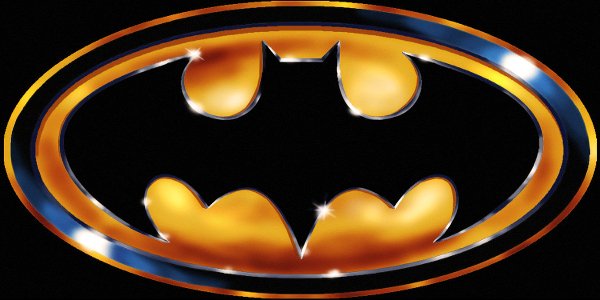
June 23rd, 1989 will forever be known as a landmark moment in box office history. Crowded theaters of anxious patrons sat gripped in fear of a madman who stood to rip apart the world that they knew and loved. Their only hope was a caped crusader whose main cause was justice. His weapons of choice were fear and brute strength, both used in the name of defending the city that his parents helped raise up from the dregs. To the world he was Bruce Wayne, but to his fans and those who knew him best, he was also Batman. By the end of Tim Burton's Batman, everything changed for audiences who grew up with campier interpretations of a traditionally melancholic super hero. This in turn changed everything the film industry came to expect when it came to adapting comic book adaptations, and thus it changed the very market it existed in to fit its own existence.
On this day 25 years ago, Tim Burton's Batman changed the way we'd see comics on the big screen, and this is why:
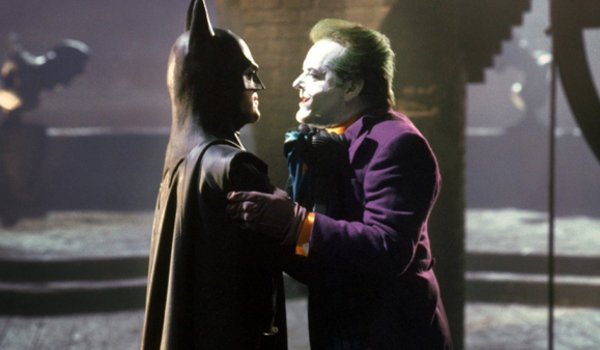
We Finally Got A Serious Version Of The Dark Knight
Up until Tim Burton's rather gothic interpretation of the Batman story, the series was defined by the iconic yet campy portrayal the hero had enjoyed on television in the 1960's. The Batman of that era wasn't a brooding, violent crime stopper, but moreso a thinker and a witty punster, tossing off one liners that made the show as light as the hero’s cartoonish punches. The fights, the villains, even the action sequences were all designed as gags rather than actual life-threatening moments. Perception of the Dark Knight completely changed with Burton's Batman, as the film really dug into the core reason why billionaire Bruce Wayne started this whole vigilante business: vengeance for his murdered parents.
Michael Keaton's portrayal of Bruce Wayne/Batman did maintain a keen mind, sharp sleuthing skills, and an arsenal of gadgets that would make Q Branch flush with glee, but all of that came with the burden of the trauma he suffered as a boy. While Burton’s vision ultimately screwed with the classic origin story told in the comics, Batman showed a man's journey of catharsis through the employment of theatricality, deception, and vigilante justice. When Batman actually tries to save The Joker in the film's final battle, he finally accepts that he has to move on from the death of his parents, thus proving to himself that he's no longer an aimless thug tearing down the city's walls to find his parent's killer. He realizes that he's not a killer at all, but instead a protector and a dispenser of justice. Without Batman, we would have never gotten movies like Christopher Nolan's Dark Knight Trilogy, or even Zach Snyder's Man Of Steel for that matter. Of course, DC Comics weren't the only ones who benefited from the rise of the darker Knight.
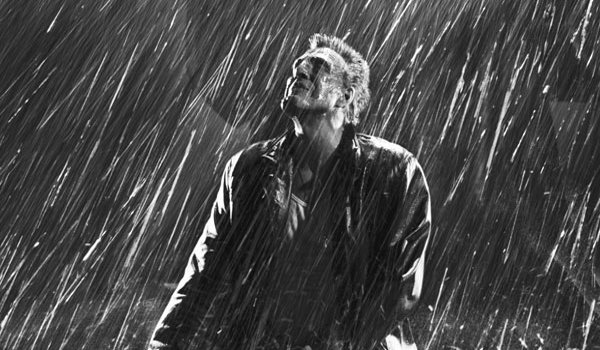
It Opened The Door For Comic Adaptations With Harsher Subject Matter
When Superman: The Movie broke onto the scene in 1978, it took comic films a gigantic leap forward into the world of legitimate, big-budget Hollywood productions. It also set the bar that Batman would pick up and run with in terms of presenting a comic book series as a thing to be taken seriously at the movies. The legend goes that director Richard Donner had a huge banner with the word "Verisimilitude" printed on it in his production office for Superman, proving that even in 1978 there were visionaries that took comic book legends as seriously as any Greek myth you'd learn about in a typical English class.
Your Daily Blend of Entertainment News
While Superman: The Movie tempered its more serious aspects with a lot of old fashioned comic book humor and gags, however, Batman substituted light hearted whimsy for gallows humor and light combat for grittier hand to hand fights, changing the comic book movie world forever in the process. To compare the execution of the Batman and Superman films is similar to comparing their fighting styles side by side. While Superman is more of a clean cut, by the book superhero with very bright colors and a stereotypical comic adaptation disposition, Batman is a darker, more hard-edged noir interpretation of heroes and villains. After 1989, the coast was clear for stoic and dark heroes to come out and play dirty in their quest for justice.
Without the success of Burton’s Batman, films like X-Men, Daredevil and even Sin City or V For Vendetta would never have had a shot to be made as faithful adaptations. Under the Superman: The Movie model, we might have seen the X-Men without adult messages about social change or a PG-13 Sin City with pop art sensibilities.
Even worse, without Tim Burton's Batman to lead the way, Christopher Nolan's Dark Knight Trilogy would have never stood a serious chance of being made the way it was. With Burton's success in translating Batman into a tragic, darker hero who isn't afraid to knock a few skulls in, it lead the way for other comics of similar (if not harsher) thematic nature to be given the due that they deserved. Coincidentally, Sam Hamm (one of the two writers ultimately credited with Batman's final screenplay) would benefit from this film's triumph by being hired to write the first screenplay to a certain DC property that owes a lot to Batman: Zach Snyder's Watchmen.
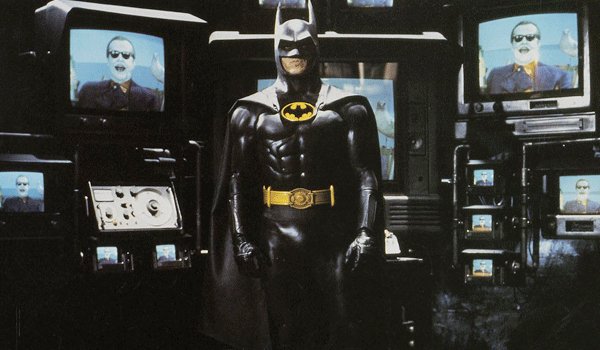
The Comic Movie Became A Certified Summer Blockbuster
Turning back to the big blue boy scout once more, you can see that Superman: The Movie opted for a December 1978 release, placing it firmly in what we now consider the fall/winter tentpole season. It didn't do bad for itself, becoming the highest grossing comic book movie ever (adjusted for inflation), as well as the second highest grossing film of 1978. If Warner Bros had thought that Superman was the end all, know all of superhero franchises, they should have waited until the got a load of what Batman had up its sleeve, though. Starting with an early teaser featuring no music, but plenty of images from the film itself, fans were being primed to expect an awesome thrill ride in June of 1989. Judging by the results of Batman's opening weekend, the promises made by that campaign were fulfilled and exceeded.
When it was released in 1989, Tim Burton’s Batman broke the opening weekend record that was set only one week prior by Ghostbusters II, and proceeded to be the first film that earned $100 million in the first ten days. It would go on to be the highest grossing film of the year domestically, in a summer where Indiana Jones and Lethal Weapon both released sequels, and in a year that Back To The Future would also release another entry in its canon. Batman, on fan buzz and name recognition alone, grew an instant franchise with a really big showing with its first entry. This success would later be emulated by several franchises from all corners of the comic landscape, especially in 2000 when X-Men helped revitalize the genre after Batman And Robin. To this day we’ve seen nothing but continued and growing success of summer comic book movies including The Avengers (which is the third biggest box office hit of all time), and Iron Man 3 (which sits at number five on that same list).
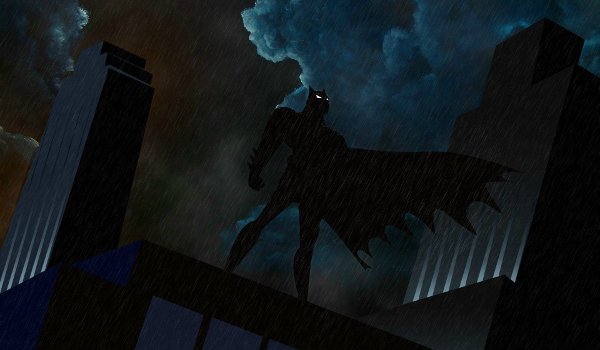
It Gave Birth To The TV/Animated Series Tie In
While both DC and Marvel are now both experimenting and tweaking with animated and live action television incarnations, one can’t forget that the stellar performance of Batman helped make way for one of the most influential cartoon shows of all time. Much like its film predecessor, Batman: The Animated Series - first aired in 1992 – traded in a more "kid friendly" look at the Caped Crusader and instead carried on with the same grit and noir tendencies that the film had proven could be successful in 1989. Paul Dini, one of the show's driving forces and key writers, said it best himself: "Our show would never have gotten made if it hadn't been for that first Batman movie." Coincidentally enough, without that first Batman animated series, properties like Superman: The Animated Series and even live action counterparts Smallville and Gotham would never even be dream of being on the small screen.
Airing over the course of three years on the Fox network's afternoon cartoon line up, Batman: The Animated Series explored the expansive bank of characters and villains that the comics had decades to play with, as well as creating new characters for Batman, Robin, and eventually BatGirl to face off against (the most notable being Dr. Harlee Quinzel, aka Harley Quinn). Much like the blazed a trail for it, Batman: The Animated Series was also notable for its depiction of violence, as well as being the first cartoon show to depict realistic firearms. The success of Batman: The Animated Series not only showed that cartoons could entertain adults as well as children, but it proved that studios could prolong the success of their film franchises by creating tonally consistent television contemporaries that kept the brand fresh.
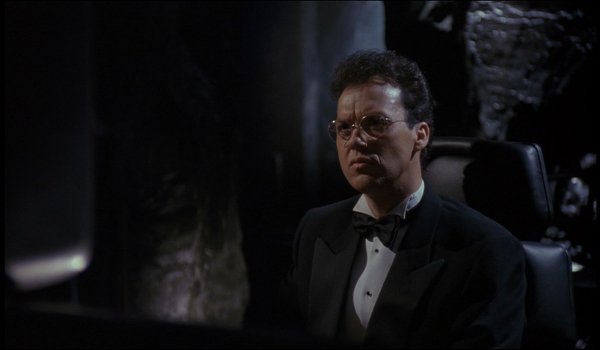
Michael Keaton's Casting Broke The Mold For Comic Heroes
When Tim Burton cast Michael Keaton as the Batman of 1989, fans protested in a way that was unheard of at the time, but has become more commonplace now thanks to the internet. Imagine 50,000 letters of protest flooding the offices of Warner Bros, and you can begin to see just how big of a deal Batman was to fans. While the studio wanted more of an action film star, Burton and producer Jon Peters both fought for – and won – Keaton's place on the film. Looking at his filmography up to 1989, Michael Keaton was known as one thing only: a comedian (especially thanks to Beetlejuice, his previous collaboration with Burton and Warner Bros.) What Warner Bros seemed to forget, though, was not only that was Beetlejuice was a character with a darker, more anarchic side; but that Michael Keaton had previously acted in the studio's film Clean And Sober: his first dramatic film, which helped win him a National Society of Film Critic's award for Best Actor.
With Batman’s director and producer in his corner, Keaton would go on to knock the roles of the Caped Crusader and Bruce Wayne out of the park, proving that his comedic timing was as good as his ability to show off the character's more pensive and deductive sides as well. It also helped that the Batsuit gave him a look that made people believe he could kick a wholesale amount of ass. Between the suit and the attitude, Keaton's Batman still lives on as one of the most well regarded portrayals of the character to this day, with the lessons of his casting coming back to further enrich the Batman legacy when Christian Bale and Heath Ledger would later be drafted into roles people didn't think they could entirely pull off. Much like Michael Keaton's Batman, Heath Ledger's casting in The Dark Knight or even Chris Evans as Captain America are exercises in creative casting that people debate on, but ultimately have paid off. This is all because the right people believed in the right version of Batman.
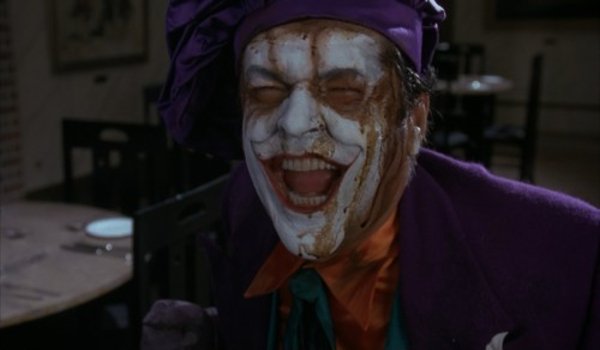
It Brought Real Life Violence To Comic Book Movies
In a typical, pre Batman superhero film, the fights between the hero and the villains would look like rather silly and sanitized affairs that didn't convey real life stakes. While Tim Burton's version of Batman wasn't as violent as most comic book movies you'd see today (especially the Christopher Nolan interpretations), the violence in his film was a surprise to audiences that didn't expect the film to carry anything past a montage of "Boom! Pow! Blap!" punches. While the Batman of earlier eras, particularly the 1966 incarnation, would rely on gimmicky gadgets that would merely add the word "bat" as a prefix to their function, the 1989 Batman would use weapons and tactics closer to our own modern world. While other heroes would use fantastical super powers that strained the boundaries of reality, against villains that existed in that same level of realism separated from the modern world, Batman is a hero without supernatural abilities fighting people who are only separated from our world by the thin thread of insanity.
The lack of powers means that his arsenal is going to be filled with more conventional weapons like guns, explosives, and anything else that Bruce Wayne can get his hands on – including said hands, which concussed or knocked out enough thugs to line the streets of Gotham end to end. This visceral, realistic approach to violence ultimately gave Tim Burton’s Batman the punch that its sense of dramatic stakes needed, and it served to enhance the film instead of just looking gratuitous. As if to come full circle with the franchise it revitalized, Christopher Nolan's Dark Knight trilogy would also come under heavy fire for blurring the lines of its PG-13 rating with very realistic (yet mostly bloodless) violence in all three of its films. Considering the state that the Batman mythos was in before 1989, this level of violence would have never been allowed if Tim Burton didn't throw the metaphorical first punch all those years ago.
Batman still resonates with fans after 25 years because it shaped the modern comic book film into what it is: a true player in the Hollywood film market, instead of just a silly children's entertainment. While the kids can still go to the movies and see their favorite heroes jumping off of the pages, their parents, older siblings, and adults of all stripes can enjoy the same films on an entirely different level. If Tim Burton's efforts had failed, maybe we'd still be waiting for The Dark Knight to show us the darker face of our favorite heroes and villains, but thankfully we don't live in that world. We live in the world where people that piled into theater after theater in the the dog days of summer were not only thrilled, but they were also inspired to continue creating projects like Batman that would show the world through a dark mirror, and yet prove that there's still a hero in the darkness – waiting to save the city that may not need their services, but deserves them.

Mike Reyes is the Senior Movie Contributor at CinemaBlend, though that title’s more of a guideline really. Passionate about entertainment since grade school, the movies have always held a special place in his life, which explains his current occupation. Mike graduated from Drew University with a Bachelor’s Degree in Political Science, but swore off of running for public office a long time ago. Mike's expertise ranges from James Bond to everything Alita, making for a brilliantly eclectic resume. He fights for the user.
